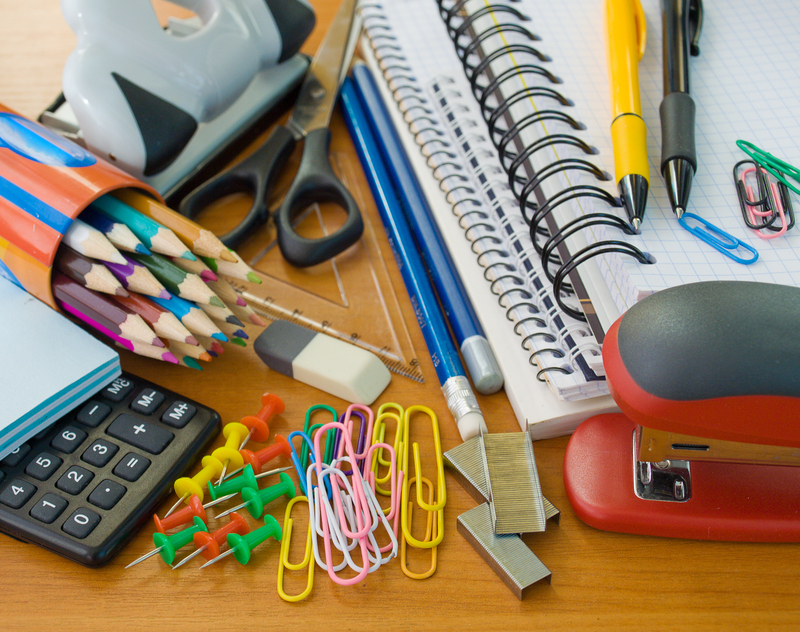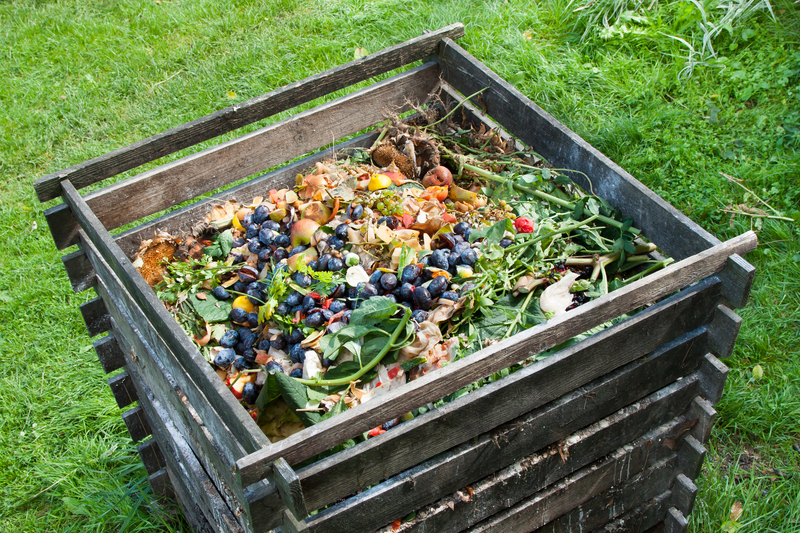Explore the Joy of Turning Garbage into Beautiful, Useful Objects
What if the trash in your bins had untapped potential to become something truly extraordinary? In a consumer-driven world overflowing with waste, the creative movement of turning garbage into beautiful, useful objects is gaining incredible momentum. This concept goes far beyond typical recycling--it's about reimagining what we throw away, giving discarded items new purpose, and injecting art, utility, and joy into the process.
Why Transforming Trash Matters: The Value of Upcycling
Waste generation is a pressing global issue. According to the World Bank, the world produces over 2 billion tons of municipal solid waste annually, and that number is only increasing. Traditional recycling helps, but it often consumes energy and doesn't elevate the material's value. Upcycling--the act of repurposing waste into items of higher quality, utility, or aesthetic appeal--is a solution brimming with environmental, social, and creative rewards.
- Reduces landfill waste: Every object that is upcycled is one less item contributing to landfills.
- Conserves resources: Upcycling uses fewer resources than manufacturing from raw materials.
- Encourages creativity and personalization: No two upcycled objects are the same, inviting unique expression and style.
- Promotes sustainability education: Hands-on upcycling teaches the value of waste reduction and resourcefulness.
- Supports community and economy: Many upcyclers launch small businesses, strengthening local economies.

The Joyful Process of Turning Garbage Into Useful Objects
Turning garbage into useful and beautiful objects isn't just practical--it's deeply joyful. Here's why:
- Creativity Unleashed: You see ordinary waste through an artist's lens, transforming "junk" into a masterpiece.
- Satisfying Results: The thrill of giving something "lifeless" a second chance is genuinely rewarding.
- Eco-Conscious Living: Each upcycled object is a personal statement against the wasteful throwaway culture.
- Learning & Skill-Building: Upcycling enhances problem-solving skills, craftsmanship, and DIY know-how.
- Conversation Starters: Upcycled items often have fascinating backstories that intrigue friends and visitors.
Popular Upcycling Ideas: Inspiring Transformations from Trash to Treasure
Are you ready to explore the joy of turning garbage into beautiful and useful objects in your own life? Here are some creative project ideas and examples that have gained popularity around the world:
1. Glass Bottle and Jar Makeovers
- Vases and Candle Holders: Clean glass jars and bottles make stunning vases, lanterns, or candle holders with a bit of paint or twine.
- Storage Solutions: Mason jars are perfect for organizing pantry goods, craft supplies, or office items.
- Lamps: Convert a wine or liquor bottle into a stylish lamp by adding a light kit and some creativity.
2. Old T-Shirts and Fabric Scraps
- Bags & Totes: With some sewing basics, even a novice can craft durable totes or shopping bags from worn clothing.
- Rag Rugs: Knot or braid strips of old fabric into sturdy and colorful rugs.
- Cleaning Rags: Cut up old tees for reusable cleaning cloths--eco-friendly and economical!
3. Furniture from Pallets and Crates
- Pallet Sofas: Stack and sand wooden pallets, top with cushions for trendy outdoor or indoor seating.
- Bookshelves: Arrange crates or pallets for instant shelving with rustic flair.
- Planters: Fill wooden boxes or barrels with soil for unique, upcycled garden features.
4. Cans, Lids, and Metal Objects
- Pen Holders & Organizers: Decorate food cans to hold pens, brushes, or kitchen tools.
- Wall Art & Mobiles: Flatten cans, lids, or salvage metal bits to create industrial art or wind mobiles.
- Garden Features: Painted tins can be repurposed as quirky plant pots or bird feeders.
5. Broken Ceramics and Tiles
- Mosaic Crafts: Shattered plates and tiles can become vibrant mosaic tabletops, frames, or stepping stones.
How to Start Turning Trash into Treasure: Step-by-Step
Embarking on your journey toward transforming garbage into beautiful, useful objects doesn't require expensive tools or training. All you need is enthusiasm, some basic guidance, and a willingness to experiment.
Step 1: Identify Reusable Trash
- Look for items in your home that routinely end up in the trash--glass bottles, cans, paper, textiles, and plastic containers.
- Ask friends or neighbors to save these items for your next project.
Step 2: Clean and Prepare Materials
- Clean all materials thoroughly (especially food containers) to remove debris and labels.
- Sort by size, shape, and material to spark new ideas for projects.
Step 3: Gather Basic Tools and Supplies
- Have essentials on hand: scissors, glue, tape, sandpaper, paints, a drill, safety gloves, and eye protection.
- Optional tools: sewing kit, staple gun, hot glue gun, or upcycling-specific kits.
Step 4: Research and Sketch Your Designs
- Browse online resources like Pinterest, YouTube, or Instagram for inspiration and tutorials.
- Sketch your ideas or make a vision board to clarify your creative goals.
Step 5: Create and Personalize
- Start Small: Simple projects like decorated jars or tin can organizers build confidence.
- Add Personal Touches: Use paint, fabric, decoupage, or text to make your object uniquely yours.
- Embrace Mistakes: Upcycling is about experimentation; even "flawed" results can become charming focal points.
Innovative Upcycling Across Cultures
Communities worldwide have long practiced creative reuse out of necessity or environmental commitment. The contemporary upcycling movement draws inspiration from these traditions, merging utility with artistry. Here are just a few global examples:
- Kenya's Ocean Sole: This social enterprise collects discarded flip-flops from Kenyan beaches and crafts them into colorful sculptures, reducing pollution and providing local jobs.
- India's Dharavi Dream Project: Residents of Mumbai's Dharavi slum transform industrial plastic waste into functional furniture and fashion, boosting both environmental health and community income.
- Latin American "Eco-Bricks": Used plastic bottles are packed with non-biodegradable waste and then used as construction materials in schools, homes, and gardens across Central and South America.
- European "Repair Cafes": These community hubs encourage repairing and upcycling everyday objects, creating a culture of reuse and shared skills in cities like Amsterdam, Paris, and Berlin.
The Eco-Impact of Upcycling: Going Beyond Recycling
What sets the joy of turning garbage into beautiful, useful objects apart from mere recycling?
- Energy Savings: Upcycling often requires minimal or no energy compared to recycling processes.
- Pollution Reduction: Fewer items incinerated or landfilled means cleaner air, water, and communities.
- Resource Preservation: Raw material demand drops as more objects get second lives.
- Limited Downcycling: Unlike recycling (where material quality can degrade), upcycling typically maintains or improves value.
In essence, turning garbage into beautiful, useful objects is a direct path to a more circular, responsible economy--one where "waste" is simply a resource in disguise.
Eco-Friendly Upcycling Tips for Beginners
- Start with what you have. Look around your home before purchasing new materials.
- Stay safe. Wear gloves, masks, and goggles as needed. Beware of sharp edges.
- Think function first. Ask yourself what purpose your finished object will serve.
- Mix art with utility. Creativity doesn't need to sacrifice usefulness.
- Share your projects. Inspire others by displaying or gifting your upcycled creations.
Showcasing the Beauty: How Upcycled Objects Enrich Our Lives
Every upcycled project tells a unique story. Whether it's a patio bench built from discarded pallets or delicate jewelry fashioned from old circuit boards, these objects celebrate resilience, imagination, and sustainability. Upcycling also brings:
- Home Character: Handcrafted pieces create interiors that reflect your values and style.
- Gift-Giving Magic: Personalized upcycled gifts are meaningful and eco-friendly.
- Learning Opportunities: Working with different materials encourages hands-on learning for kids and adults.
- Connection and Community: Participating in workshops or sharing projects online builds friendships and shared purpose.
Exploring the joy of turning garbage into beautiful and useful objects is not just about waste management--it's about transforming mindsets, sparking creativity, and adding joy to everyday life.

Frequently Asked Questions (FAQs) About Upcycling Garbage
- What is the difference between upcycling and recycling?
While recycling breaks materials down for remanufacturing (often reducing their quality), upcycling reuses the material "as is" to create something of equal or greater value, often through creativity and craftsmanship. - Is upcycled art only for artists or crafters?
Not at all! Beginners of all ages can explore the joy of upcycling. There are endless simple projects and online tutorials to help you get started. - Can upcycling really help the environment?
Absolutely. Every item upcycled saves resources, reduces waste, and encourages a more mindful, sustainable lifestyle. - Where can I find inspiration for upcycling garbage?
Start with social media (#upcycling), online communities, and DIY websites. Or join a local workshop--many cities now have classes dedicated to creative reuse.
Conclusion: Discover the Endless Potential of Your Waste
The next time you're about to throw something away, pause and reconsider: Could this be transformed into something beautiful, meaningful, or functional? By exploring the joy of turning garbage into beautiful, useful objects, you'll not only reduce your environmental impact but also enrich your own life with new skills, artistry, and satisfaction.
Every piece of trash has potential. Unleash your creativity, improve your surroundings, and join the growing upcycling movement today--it's a journey that's as rewarding as it is responsible.
Ready to begin? Gather some "garbage," grab your tools, and let your imagination run wild. Beauty and utility are just a project away.
